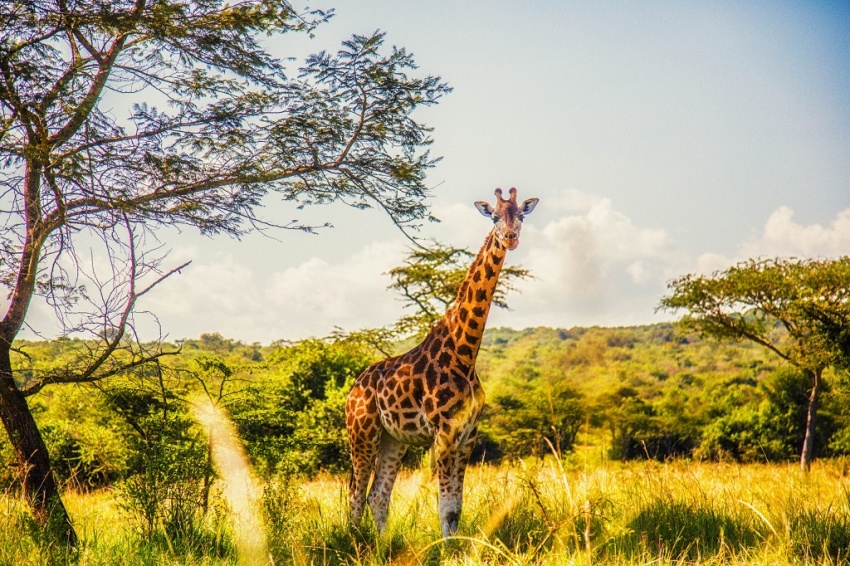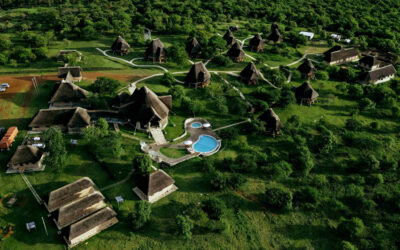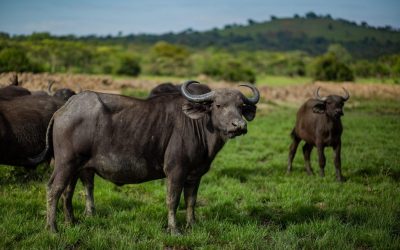Giraffe populations are rising, giving new hope to scientists
Giraffe numbers are 20 percent higher than in 2015, an increase linked to conservation efforts and more accurate survey data.
15 giraffes were moved to Uganda’s Lake Mburo National Park in 2015. The population has already grown to a total of 37, Fennessy says.
Giraffe numbers have increased across Africa, new research shows, a rare spot of good news in the conservation world.
According to a recent analysis of survey data from across the African continent, the total giraffe population is now around 117,000, approximately 20 per cent higher than it was thought to be in 2015 when the last major survey was published.
This rise is a result of genuine growth in some areas, but also stems from more accurate census data, says Julian Fennessy, executive director of the Giraffe Conservation Foundation, based in Namibia. “It’s great to see these numbers increasing,” says Fennessy, a co-author of the new research.
Giraffes were once considered a single species. But recent genetic evidence shows there are likely four species of giraffe, three of which have increased considerably in number: northern, reticulated, and Masai giraffes. The fourth, southern giraffes, have remained relatively stable.
Data were collected during the last few years across 21 countries, by governments, researchers, nonprofits, and even citizen scientists. Fennessy and six co-authors then analyzed this vast trove of information and published the results in December 2021 in the peer-reviewed research volume Imperiled: The Encyclopedia of Conservation.
Even so, populations remain relatively small, considering that there were a million of these animals a couple of hundred years ago, and their numbers have decreased for decades in what some scientists call a “silent extinction.”
The animals are threatened by habitat degradation and fragmentation, climate change, and poaching—so their plight remains urgent, Fennessy says.
“But there is positive news, too, and too often conservation focuses on the negative,” he says.
Putting the puzzle together
Finding and making sense of all the data was a monumental effort, involving considerable collaboration, outreach, and cooperation. “We can now be more confident in how we assemble this complicated and dynamic puzzle,” says co-author Michael Brown, an ecologist with the Giraffe Conservation Foundation and Smithsonian Conservation Biology Institute in Virginia.
Field research has also become more accurate. Historically, researchers have often surveyed populations of wild giraffes from aeroplanes. But this can undercount the total in certain areas where the long-legged herbivores can remain hidden under trees and vegetation. One new, more robust approach involves intensive photographic surveys, wherein computer programs scan images and recognize individuals based on their unique spot patterns.
“While advanced survey methods may be the reason for some of the increase in population estimates, there has been very positive indicators that conservation programs on the ground are also having a profound impact,” says Jenna Stacy-Dawes, a biologist not involved in the current paper, who studies giraffes at the San Diego Zoo Wildlife Alliance.
Northern giraffes, the most threatened species, live in isolated populations across Central and West Africa, as well as Uganda and parts of Kenya. The new paper estimates there are more than 5,900 of this species, a significant increase from 2015 when there were 4,780.
Several efforts to move, or translocate, these animals into new areas without existing giraffe populations—for example, into reserves within Niger, Chad, and Uganda—have boosted the species’ numbers, Fennessy says. For example, 15 giraffes were moved to Uganda’s Lake Mburo National Park in 2015. The population has already grown to a total of 37, Fennessy says.
The second least-populous species is the reticulated giraffe, whose stronghold is in northern Kenya. The authors estimate there are just shy of 16,000 of these animals, nearly double the estimated count in 2015. But this increase is likely largely accounted for by better data, and not due to massive growth, Brown says.
Masai giraffes, found mostly in Tanzania and southern Kenya, have an estimated population of 45,000, a 44 per cent increase from seven years ago. The most populous species, the southern giraffe, roams throughout Namibia, Botswana, South Africa, and beyond. There are now thought to be 48,000, roughly the same as in 2015.
There are still some areas without good population data, such as South Sudan, though due to the civil unrest in the region, many fear that poaching has gone up. Population estimates in Ethiopia and Somalia are also unclear. There are also places where numbers are declining, such as for northern giraffes in the Central African Republic or southern giraffes in Zimbabwe.
Renewed hope
The International Union for Conservation of Nature, which determines species’ conservation statuses, has not finished evaluating new genetic data on giraffes and still considers them to be one species, classified as vulnerable to extinction, with nine subspecies.
The IUCN does regard two subspecies of northern giraffes to be critically endangered, and two others—Masai and reticulated giraffes—to be endangered.
Illegal hunting for the animals’ meat, hide, bones, and tails remains a big problem in certain areas. But Jared Stabach, a researcher with Smithsonian Conservation Biology Institute, says his main concern is unsustainable development, including drilling for petroleum and road construction. “That’s what keeps me up at night,” he says.
One example is the expansion of oil and gas exploration around Uganda’s Murchison Falls National Park, which threatens to fragment and damage habitat for the area’s large population of critically endangered northern giraffes.
Even so, in places where governments, citizens, researchers, and conservationists have come together to protect the world’s tallest animal, there’s hope populations can thrive.
“When conditions are good for giraffes, they can rebound in incredible ways,” Brown says. “All they need is a chance.”
Credit: nationalgeographic.com



